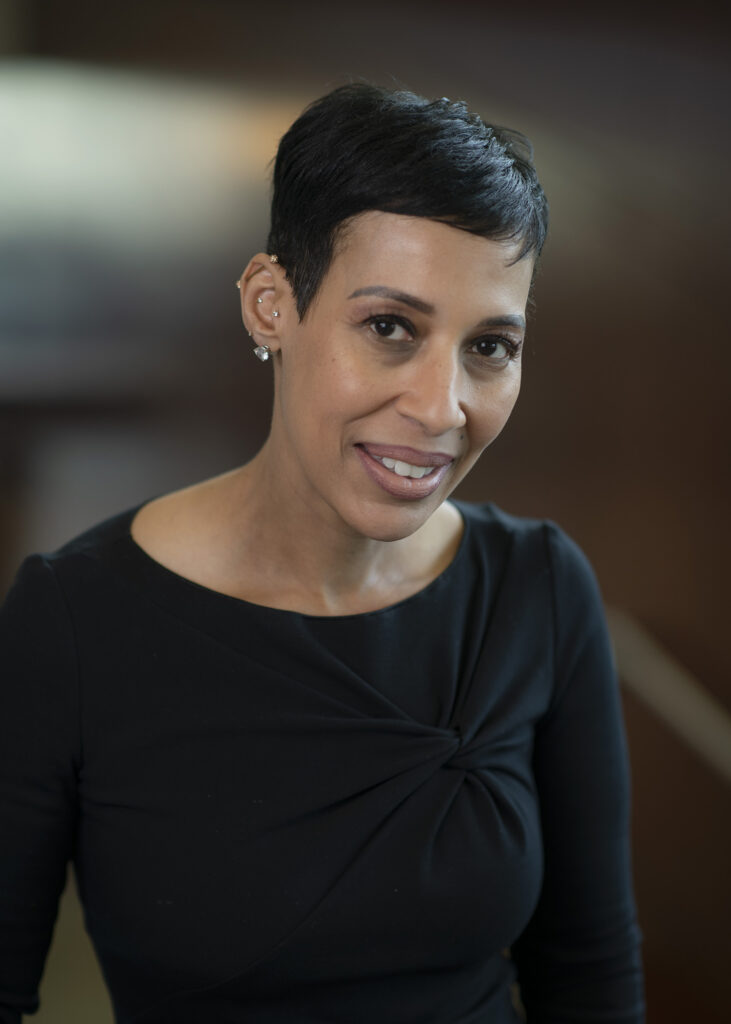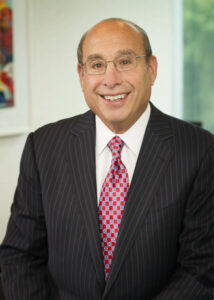Ending Racism Together: RWJBarnabas Health is on a Journey to Create True Equity in Healthcare

Ending Racism Together: RWJBarnabas Health is on a Journey to Create True Equity in Healthcare
West Orange, NJ – RWJBarnabas Health (RWJBH), the largest academic healthcare system in New Jersey, is addressing equity and systemic racism and promoting an antiracist culture throughout the organization and the communities it serves.
Here, Barry Ostrowsky, President and Chief Executive Officer of RWJBH, and DeAnna Minus-Vincent, Chief Social Integration and Health Equity Strategist, explain what the system’s Ending Racism Together initiative entails.
Racism has been described as a public health crisis. What does that mean?
[BARRY OSTROWSKY] We start with the proposition that there is structural racism in our society. The data show that whether you’re talking about food insecurity, housing, education, employment or financial and economic development, the majority of people who aren’t doing well are people of color, particularly Black people. When it comes to healthcare, disparities of outcome for people of color, and particularly Black people, are deeply harmful. That is not a political statement. It is a data-driven statement.
[DEANNA MINUS-VINCENT] Research shows that 80 to 90 percent of health outcomes are a result of social determinants of health—the conditions in which a person lives, works and plays. That’s important, because race itself has been found to be a social determinant. When we look at the data, even when all other things are equal, people of color, in particular Black people, still have poor health outcomes.
What are some examples of how racism plays out in healthcare?
[DEANNA MINUS-VINCENT] Statistics show that even Black women with more education and more income tend to lose their babies more often than white women who have less income and less education. This is due to the chronic stressors of being Black in America and what chronic stress does to our bodies. It creates a fight-or-flight syndrome at all times. Therefore, we’re more susceptible to losing our babies and to chronic diseases. Countless research studies show that pain levels expressed by Black people are not believed, and so prescription pain medicines are not given in the same amount. Even Black children with fractures aren’t given the same level of medication as white children. When a Black person goes into an emergency department, people assume we are substance abusers. I remember going to an ED with an asthma attack and the nurse saying, “Do you have any clean veins?” I work in healthcare and so I was able to navigate the system and march upstairs and talk to the CEO. But I shouldn’t have to do that, and neither should anyone else.
What is the role of a healthcare system in combating racism?
 [BARRY OSTROWSKY] We realize that when we construct healthcare delivery mechanisms, we have to consider the ability of everybody to access them. It’s not equitable to simply say, “Anyone can walk into our clinic between the hours of 9 a.m. and 4 p.m.” Many people, particularly Black people in urban communities, can’t take time off for a healthcare visit during those hours. From an operational standpoint, we’re reviewing key policies and procedures such as the refusal of care policy. We’ve conducted Listening Tours to afford employees at all levels of the organization the opportunity to provide input, and we held focus groups in April and May so that employees could have a say in the strategic planning process.
[BARRY OSTROWSKY] We realize that when we construct healthcare delivery mechanisms, we have to consider the ability of everybody to access them. It’s not equitable to simply say, “Anyone can walk into our clinic between the hours of 9 a.m. and 4 p.m.” Many people, particularly Black people in urban communities, can’t take time off for a healthcare visit during those hours. From an operational standpoint, we’re reviewing key policies and procedures such as the refusal of care policy. We’ve conducted Listening Tours to afford employees at all levels of the organization the opportunity to provide input, and we held focus groups in April and May so that employees could have a say in the strategic planning process.
[DEANNA MINUS-VINCENT] We hold monthly educational sessions for employees, called “Equitable Encounters: Real Talk About Race,” where issues of racism are discussed. Training is forthcoming for all employees. We’re also thinking about how to serve people in the way they want to be served. For example, historically, if someone has a need, we send an outreach worker to their house. But if you work two jobs and only have a few hours with your kids, maybe you don’t want outreach workers coming to the house. Maybe you’d prefer email or phone-based support. If you do need an outreach worker for complex problems, how do we coordinate services with our community partners so you can have just one outreach worker, instead of several?
In addition to the practices you mention, how will a patient at an RWJBH facility become aware of the anti-racism initiative?
[BARRY OSTROWSKY] When patients come to our facilities, they’ll see posters and messages on video screens, and will experience an environment of respect. When we admit patients, we’ll make the point that we’re an antiracist organization and if they have any experience that’s inconsistent with that, please tell us. The journey to end racism requires everybody’s effort and commitment. We know that we can’t send out a memo saying, “We’re anti-racist, and by the end of the year there’ll be no racism.” We invite patients and all our employees to speak up and engage as we make more progress toward becoming an anti-racist organization.
As part of Ending Racism Together, RWJBarnabas Health conducts regular trainings and other educational events for its employees.
A recent session focused on the topic of microaggressions, the everyday verbal and nonverbal slights and indignities that members of marginalized groups experience in their day-to-day interactions. Often, individuals who engage in microaggressions are unaware that they have said something offensive or demeaning. The accumulated experience of receiving microaggressions can lead to depression, anxiety and effects on physical health. What are some examples? Mispronouncing a person’s name even after he or she has corrected you. Asking an Asian American where she’s “really” from. Clutching your purse or wallet when a Black or Latino man approaches. Assuming a person of color is a service worker. How can a person avoid committing a microaggression? Think before you speak. Reflect on whether your brain is “stuck” on the racial or other differences between you and another person. If confronted on a microaggression, try not to be defensive and to understand the other person’s point of view.
To learn more about RWJBarnabas Health’s commitment to racial equity, visit www.rwjbh.org/endingracism.
ABOUT RWJBarnabas Health
RWJBarnabas Health is the largest, most comprehensive health care system in New Jersey, with a service area covering nine counties with five million people. The system includes eleven acute care hospitals – Clara Maass Medical Center in Belleville, Community Medical Center in Toms River, Jersey City Medical Center in Jersey City, Monmouth Medical Center in Long Branch, Monmouth Medical Center Southern Campus in Lakewood, Newark Beth Israel Medical Center in Newark, RWJUH New Brunswick, RWJUH Somerset in Somerville, RWJUH Hamilton, RWJUH Rahway and Saint Barnabas Medical Center in Livingston; three acute care children’s hospitals and a leading pediatric rehabilitation hospital (Children’s Specialized Hospital) with its multiple outpatient centers, a freestanding 100-bed behavioral health center, two trauma centers, a satellite emergency department, ambulatory care centers, geriatric centers, the state’s largest behavioral health network, comprehensive home care and hospice programs, fitness and wellness centers, retail pharmacy services, a medical group, multi-site imaging centers and two accountable care organizations. RWJBarnabas Health is New Jersey’s largest private employer – with more than 33,000 employees, 9,000 physicians and 1,000 residents and interns.
RWJBarnabas Health recently announced a partnership with Rutgers University to create New Jersey’s largest academic health care system. The collaboration will align RWJBarnabas Health with Rutgers’ education, research, and clinical activities, including those at the Rutgers Cancer Institute of New Jersey and Rutgers University Behavioral Health Care. The alliance will result in a multi-specialty group that will be one of the largest medical groups in the country.
# # #








